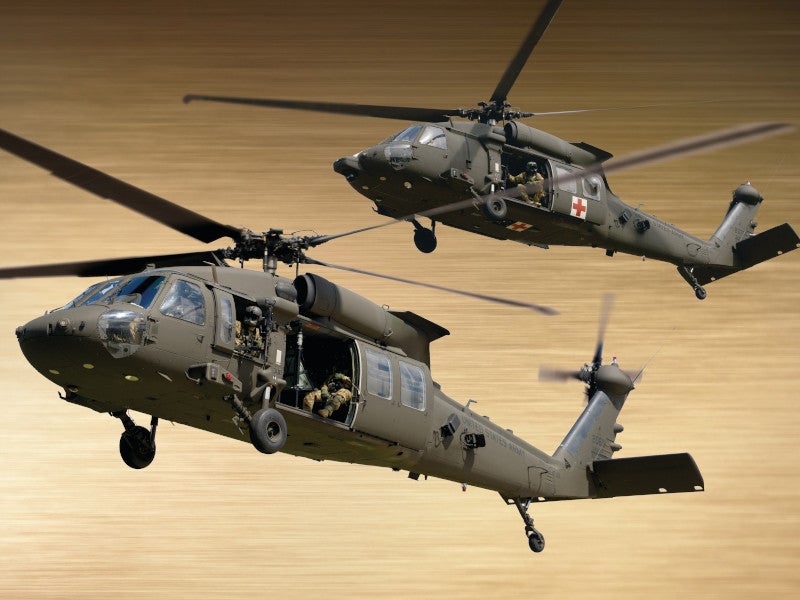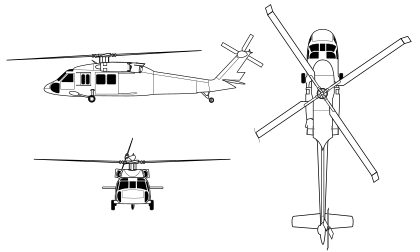UH 60 Helicopter: Advanced Avionics and Fight Systems
A Comprehensive Overview to the Maintenance and Care of Aircraft for Long Life
The long life of an airplane hinges substantially on its upkeep and care, necessitating a structured method to make certain optimum performance and safety and security. Understanding the intricacies of these techniques can be complex; as a result, it is important to discover the important aspects that add to reliable aircraft treatment and the effects of neglecting these obligations.
Value of Regular Upkeep
Regular maintenance is vital for the safety, performance, and long life of aircraft. A methodical approach to upkeep ensures that all components function optimally, thus minimizing the threat of mechanical failure throughout operation. Routine assessments and servicing enable service technicians to determine potential issues prior to they rise into considerable issues, ensuring that the airplane continues to be in conformity with aviation policies.
Moreover, preserving an airplane according to the maker's guidelines is crucial for maintaining its worth. A well-documented maintenance background can enhance resale prospects and instill confidence in prospective customers. Additionally, regular maintenance adds to operational effectiveness, as it aids to maximize gas consumption and performance metrics, resulting in cost savings in time.
Moreover, routine upkeep adds to the general safety of trip operations (uh 60). By dealing with deterioration quickly, operators can mitigate dangers connected with aging aircraft systems. This aggressive method not just safeguards the lives of guests and crew but also safeguards the aircraft itself versus tragic failings

Daily Evaluation Checklist
Just how can pilots and upkeep staffs make sure the airplane remains in optimal condition prior to each flight? The response hinges on a thorough day-to-day assessment checklist, which works as an important protocol to recognize potential issues that can compromise security and performance. This list ought to incorporate several key areas, including outside and interior assessments, in addition to functional checks of critical systems.
Beginning with the outside, teams ought to analyze the airframe for any type of visible damage, leaks, or signs of rust. Interest must be paid to regulate surfaces, touchdown gear, and the condition of tires. Relocating to the interior, the team needs to confirm that all controls and tools are functional, guaranteeing that digital systems are operating properly.

In enhancement to structural checks, it is vital to evaluate gas levels and confirm that all needed files, consisting of enrollment and weight and balance details, are up to date. Ultimately, a review of emergency situation tools, consisting of life vests and fire extinguishers, need to be performed to make sure conformity with safety regulations. By diligently following this daily examination list, pilots and upkeep staffs can considerably enhance the security and integrity of their airplane.
Set Up Maintenance Programs
Scheduled maintenance programs are essential for the long-term safety and efficiency of aircraft procedures. These programs are created to make sure that all airplane parts undertake regular inspections, upkeep, and required repair work at predetermined intervals. By adhering to an organized upkeep timetable, drivers can dramatically reduce the threat of in-flight failings, boost airplane integrity, and extend that site the life expectancy of important components.
Typically, scheduled maintenance is categorized right into numerous levels, including A, D, b, and c checks, each with unique needs and thoroughness. A checks are generally more constant and concentrate on fundamental aesthetic assessments and small repair services, while D checks are a lot more detailed and happen much less often, including comprehensive disassembly and overhaul of the aircraft.
Regulative bodies, such as the FAA and EASA, mandate compliance with particular maintenance timetables based upon aircraft type and usage. Operators must keep meticulous records of all maintenance carried out to show compliance and promote assessments. Furthermore, the integration of predictive maintenance modern technologies can better enhance the effectiveness of scheduled programs by recognizing potential issues before they intensify, therefore making sure that aircraft continue to be in optimum problem and prepared for secure procedures.
Treatment for Airplane Interiors
Looking after airplane insides is critical not just for guest comfort however additionally for preserving the overall worth and security of the aircraft. Regular cleansing and upkeep of the interior elements add considerably to a positive flying experience while maintaining the airplane's visual allure.
To guarantee optimal treatment, it is vital to establish a routine cleaning routine that includes my website vacuuming carpets, wiping down surfaces, and disinfecting high-touch areas. Upholstery and seats should be checked for deterioration, with any type of damages immediately addressed to avoid further degeneration. Additionally, focus should be offered to the galley and lavatory areas, which need thorough cleansing and restocking of products to preserve hygiene.
Furthermore, the usage of ideal cleansing agents is vital; extreme chemicals can damage finishes and products, so it is recommended to make use of items especially made for aircraft interiors. Normal assessments must likewise be carried out to identify any kind of maintenance requires, such as replacing worn-out seat covers or fixing window tones. By focusing on the treatment of aircraft insides, drivers can improve the general traveler experience and safeguard the financial investment in their aircraft.
Comprehending Regulatory Compliance
Governing compliance is an important facet of airplane upkeep, typically needing drivers to stick to a complicated structure of neighborhood, nationwide, and international requirements. This framework is primarily developed by air travel regulatory bodies such as the Federal Air Travel Management (FAA) in the United States and the European Union Aviation Safety And Security Agency (EASA) in Europe - uh 60. These organizations set forth guidelines that regulate various facets of airplane maintenance, including airworthiness, safety and security procedures, and functional procedures

Additionally, drivers should remain notified concerning adjustments in regulations and take part in training programs to guarantee that their personnel is experienced about compliance needs. Failing to abide by these regulations can cause serious charges, consisting of penalties, grounding of aircraft, or loss of accreditation. For that reason, understanding and sticking to regulative compliance is vital for the longevity and safety and security of airplane operations.
Verdict
In verdict, the maintenance and treatment of airplane are extremely important for guaranteeing her response long life, safety and security, and functional efficiency. Interest to the aircraft's inside and conformity with regulatory criteria dramatically add to preserving its worth.
The durability of an aircraft hinges dramatically on its maintenance and treatment, demanding a structured approach to make sure ideal efficiency and security. By carefully following this daily assessment checklist, pilots and maintenance staffs can significantly improve the security and dependability of their airplane.
These programs are designed to ensure that all aircraft parts go through normal assessments, upkeep, and required repair services at predetermined periods. By focusing on the treatment of airplane insides, operators can enhance the general traveler experience and secure the financial investment in their airplane.
In verdict, the maintenance and treatment of airplane are critical for making certain longevity, safety and security, and operational performance.